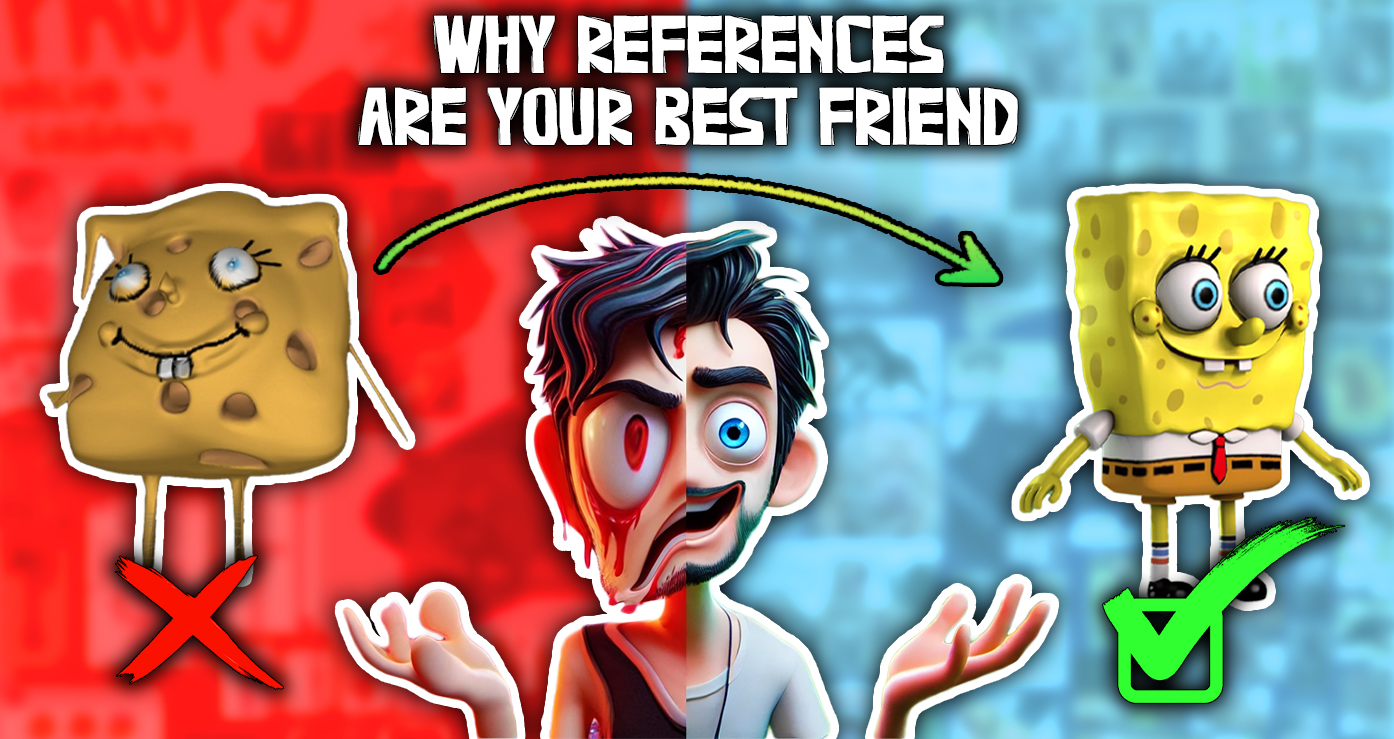
So, you’re sitting down to create something awesome—a 3D model, a game UI, a character concept—and you’re thinking, “I don’t need references, I’ll just create from my imagination!” 😎
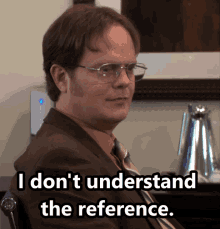
Sounds freeing, right? No rules, no restrictions… just pure creativity! 🎨✨
But here’s the thing: even the best artists, designers, and developers don’t work like that. They rely on references—not because they can’t create from imagination, but because references make the process faster, easier, and way more effective.
Let’s fix that and break it down in a way that makes sense.👊
“But I Want to Be Original!” – The Big Myth 🚫
A lot of creatives worry that using references means they’re copying or being unoriginal. But in reality, everything is inspired by something.

Think about your favorite games, movies, or designs:
🎮Game Artists? They use real-world architecture, nature, and even old paintings to design environments.
🩻Character Designers? They study fashion, anatomy, and history before sketching a single hero.
🖥️ UXUI Designers? They analyze how top-tier apps and games structure their interfaces for better usability.
Even the most imaginative worlds—like sci-fi cities or fantasy landscapes—are based on real places, objects, and materials. Creativity isn’t about making something from nothing; it’s about uniquely combining influences.
Example:
Ever noticed how Doomguy and Master Chief have similar armor styles? That’s because they both pull from military and sci-fi aesthetics. Neither is a copy, but they share common influences.

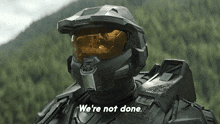
🔹 Tip: Instead of avoiding references, collect them! The more you study, the better you’ll be at transforming inspiration into something fresh.
Why “Just Winging It” Doesn’t Work 😬
Ever tried designing a gun, spaceship, or fantasy creature purely from imagination? It probably ended up looking… a little off.

That’s because our brains don’t store details perfectly. If you’ve never deeply studied how something looks or functions, you’re bound to miss key elements—whether it’s the proportions of a human body, the way metal reflects light, or how UI elements should be spaced for readability.
Common Issues Without References:
❌ Proportions feel off – A character’s head is too big, or a gun looks like a toy.
❌ Textures don’t make sense – A leather jacket looks like plastic.
❌ UI feels cluttered – Users struggle to navigate menus.
❌ Details are inconsistent – A fantasy castle has sci-fi doors that don’t match.
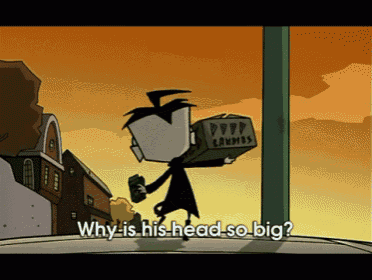
Using references doesn’t mean copying—it means understanding. You’re training your eye to recognize what makes designs work.
How to Use References Effectively 🔍
So, how do you use references the right way without just copying?
Think of references as your creative toolbox. Before jumping into a project, gather images that relate to what you’re making:
✅ 3D Modeling? Look at real-world objects, blueprints, and concept art.
✅ Game Environments? Study lighting, architecture, and landscapes.
✅ UXUI? Check app layouts, button placements, and typography.
🔹 Tools to Organize References:
- PureRef – The best free tool for organizing references.
- Pinterest / ArtStation – Great for daily inspiration.
- Unsplash / Pexels – Free high-quality real-world images.
 Analyze Before You Create 🧐
Analyze Before You Create 🧐
Before diving in, take a moment to study your references. Ask yourself:
- What materials and textures are used?
- How is the lighting affecting the look?
- What makes the UI layout easy to navigate?
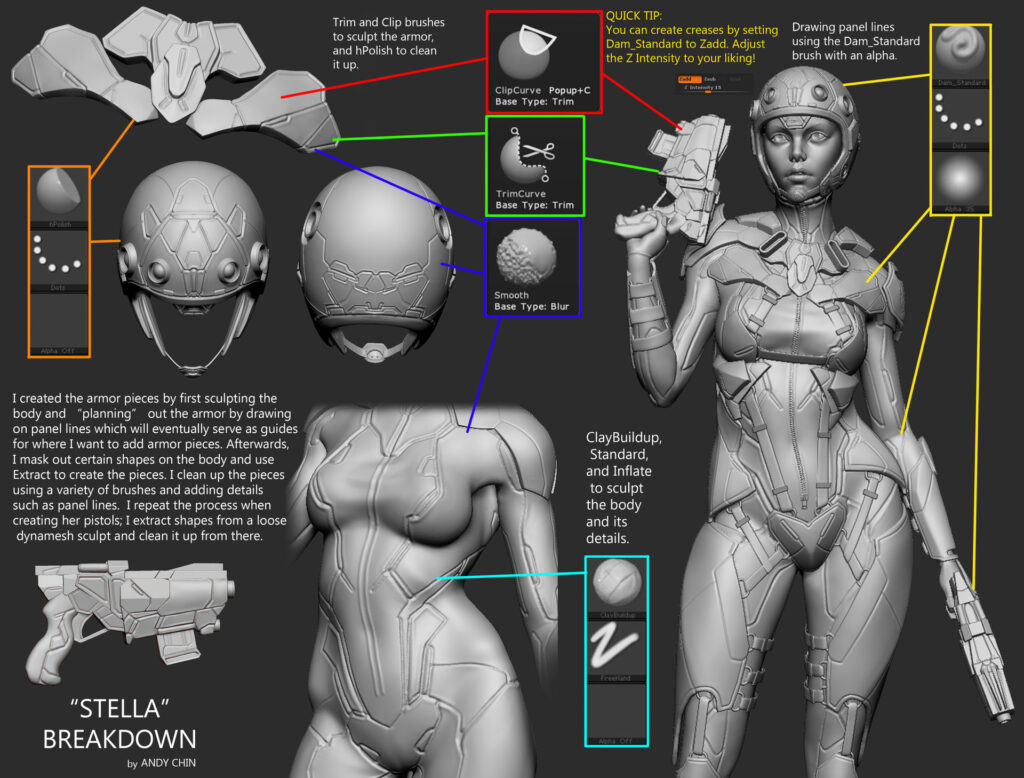
Instead of copying, understand the design choices. This will help you adapt them into your own unique work.
 Remix & Make It Your Own 🎛️
Remix & Make It Your Own 🎛️
Once you’ve gathered and studied references, combine elements in a way that fits your project.
Using just one reference can make your design look generic or too familiar. But if you mix multiple references, you’ll create something fresh.
Example:
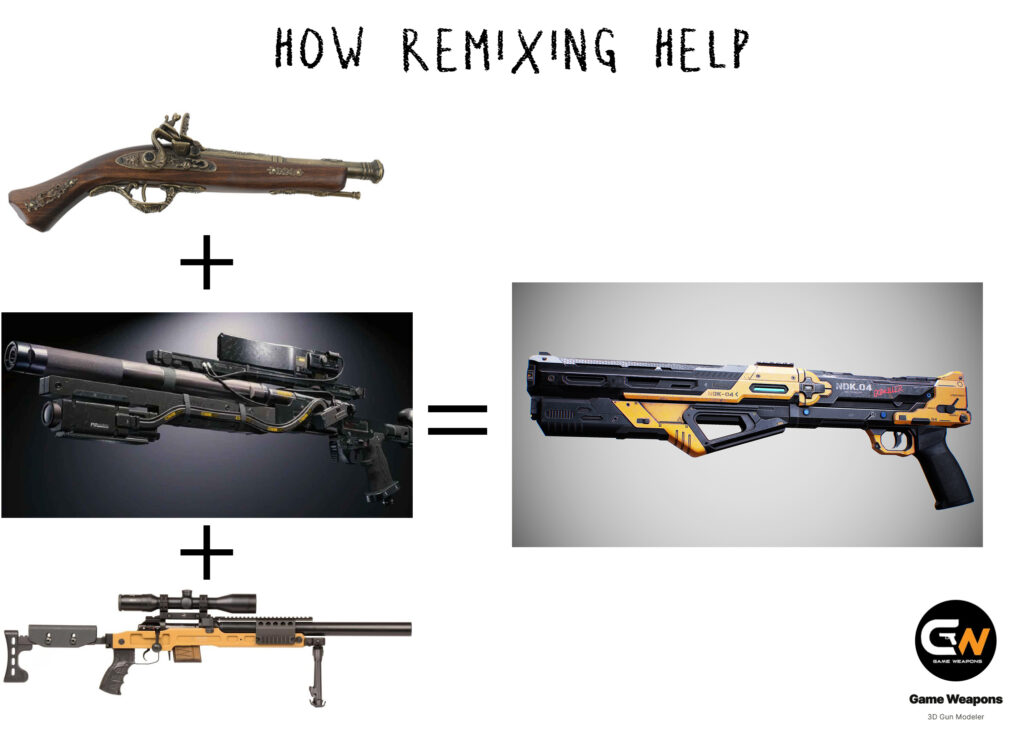
If you’re designing a sci-fi weapon, you could take the shape of an old flintlock pistol, use materials from a modern sniper rifle, and add a cyberpunk color scheme.
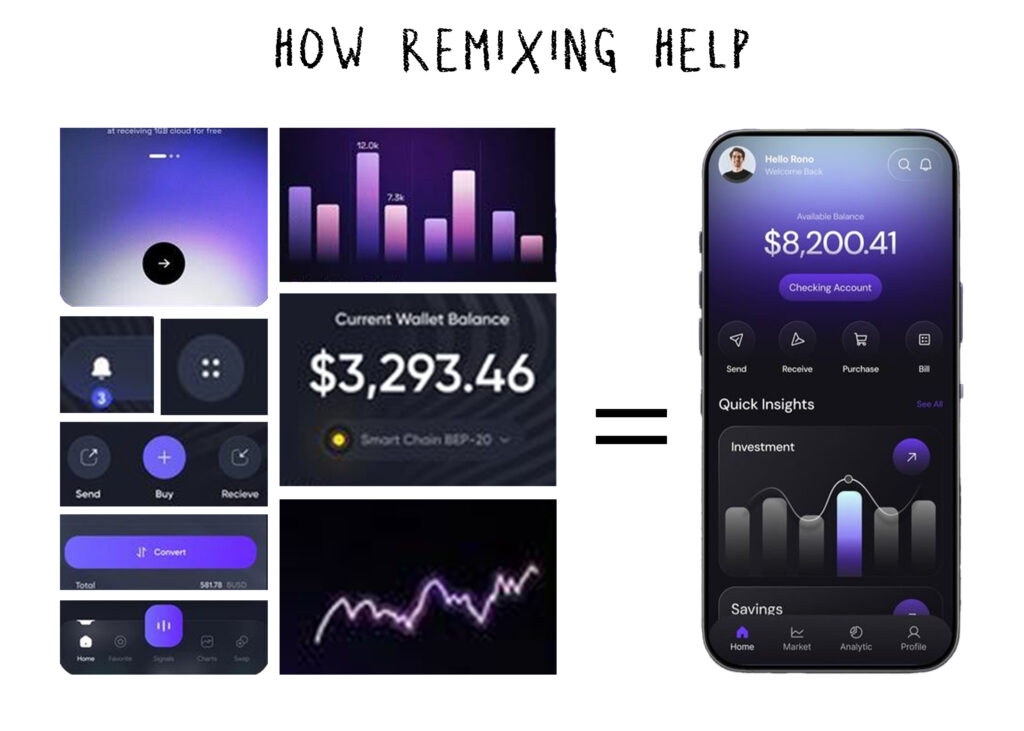
For UXUI, if you like how a mobile game arranges its buttons but prefer the color scheme of another, mix them to create something new.
🔹 Tip: The goal is to use references as a guide, not a rulebook. Adapt and experiment! Take more than one reference
“Training Your Imagination the Right Way”😌
Some people worry that relying on references too much will weaken their imagination. But actually, it’s the opposite.
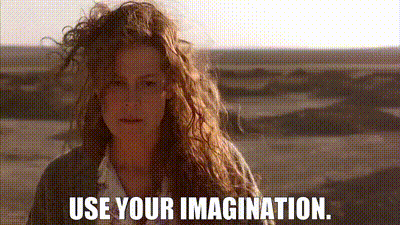
Think about it like this:
- 🧑🏻🎨An Artist doesn’t develop a unique style without studying thousands of works.
- 🎮A UXUI designer doesn’t craft user-friendly interfaces without testing apps, analyzing usability, and learning from industry standards.
- 🤖A 3D artist doesn’t sculpt a perfect human face without studying anatomy, observing real people, and analyzing existing character models.
Your brain is like a library. The more references you collect and analyze, the more you’ll have stored for future projects.
Final Thoughts: Why References Matter 🙃
Using references is one of the biggest level-ups you can give yourself as a creative. Whether you’re in 3D art, game development, UXUI, or illustration, references:
✅ Speed up your workflow – No more guessing proportions or details.
✅ Improve accuracy – Your work looks polished and professional.
✅ Help you innovate – By combining different inspirations, you create something unique.
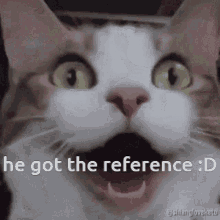
If you’re serious about improving, start making reference boards a habit. Great artists don’t avoid references—they master how to use them.
Recommended Books to Deepen Your Skills 📖
If you want to break free from the “no references” mindset and improve your craft, these books are game-changers:
📌 Steal Like an Artist – Learn how inspiration works in creative fields.
📌 Art Fundamentals: Theory and Practice – Essential for improving your artistic foundation.
📌 The Skillful Huntsman – Shows how professionals build concepts using references.
📌 Color and Light by James Gurney – Great for lighting and composition in any visual art.
📌 The Design of Everyday Things – A must-read for product designers.
Now It’s Your Turn! 🚀
Next time you start a project, gather your references first. You’ll be surprised at how much easier—and better—your work will become.
What’s one reference-based habit you’ll start using today? Let’s discuss in the comments! 😊🎨🎮
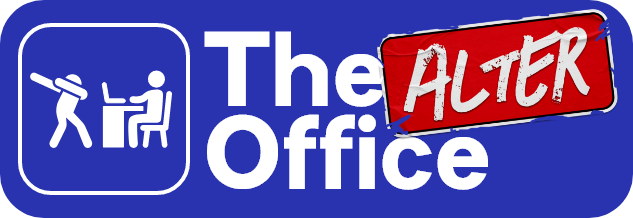
a good read!